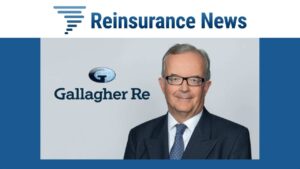More Evidence That Spending Spikes Can Derail Retirement Savings

What You Need to Know
New research finds the frequent spending spikes seen in the private sector also occur among public-sector workers.
Particularly worrying is the common occurrence of unfunded spending spikes that can result in higher credit card debt.
One potential solution is the promotion of emergency savings and financial wellness training.
The same pattern of frequent spending spikes seen in the private sector also appears to be a fact of life for public-sector workers and retirees, according to a new analysis published by J.P. Morgan and the Employee Benefit Research Institute.
As defined in the report, a “spending spike” occurs when a household spends 25% more than the previous 12 months’ median spending, wherein the excess spending can’t be met with just that month’s income.
These spending spikes occurred at a similar frequency for public plan participants as for the 401(k) plan participants in the prior study, with some nine in 10 public-sector employee households experiencing them in the study period.
Likewise, a similar level of one in three study participants experienced an “unfunded spending spike,” wherein the 25% jump in spending could not be met with the monthly income plus cash reserves on hand. Once again, lower-income households were found to be more prone to unfunded spending spikes — but higher earners are not immune.
In both the public and private sector, such unfunded spikes often lead to higher credit card debt and retirement plan loans, sometimes with a significant impact on retirement readiness.
A ‘Surprising’ Result
The researchers call the commonality of the findings “surprising,” given the different populations and time periods considered.
“Unlike our earlier study period (2016 – 2020), which was mostly pre-pandemic, our public plan research period (2019 – 2021) overlapped with the pandemic,” the authors observe. “During the pandemic, some households received federal relief checks while they were spending less on travel and entertainment.”
Consequently, credit card debt was reduced, and savings levels climbed for households that received consistent employment income during this time. Even so, the end of government relief seems to have led to the same prior pattern of common spending spikes.
As in the case of the private sector, the researchers conclude, public employers can enhance their employees’ financial security and retirement preparedness through financial wellness programs and supportive policies, such as debt management education and incentivizing or automating emergency savings.
How Public Pensions Factor In
The authors point out that one big difference between the study populations is the fact that defined benefit pensions are not as common in the private sector as they are in the public sectors.
“Most public plan employees have pensions, something most private sector 401(k) participants do not have,” the authors observe. “Nevertheless, and perhaps surprisingly, we found the two studies’ findings were remarkably similar.”




